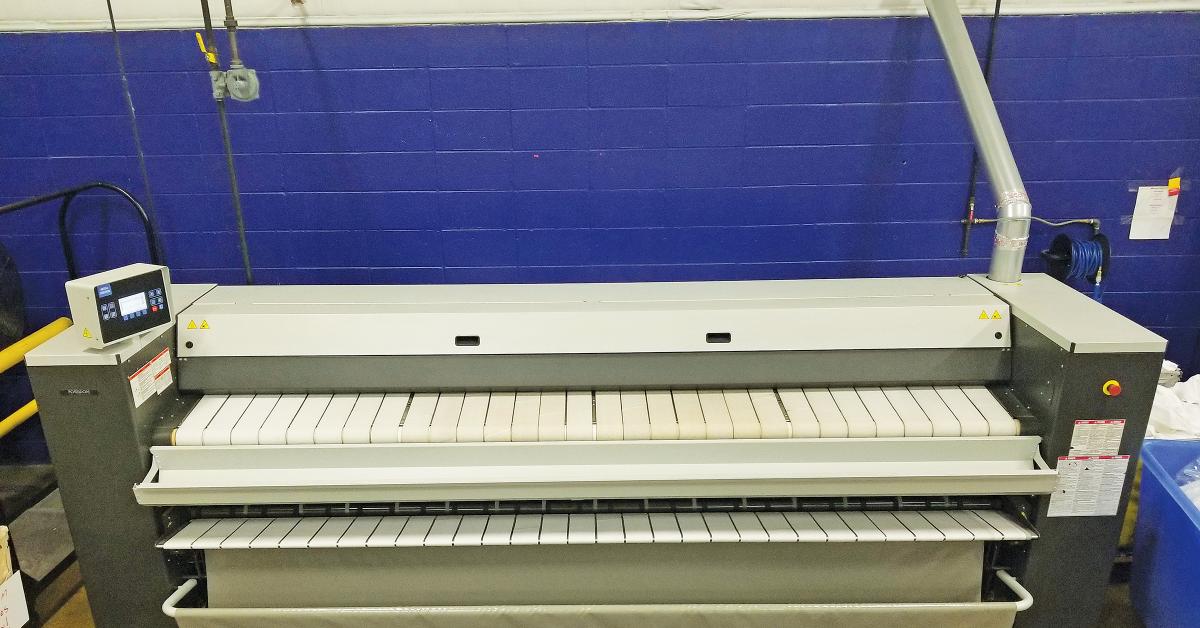FORT WAYNE, Ind. — Purchased in 2000 by Steve Grashoff and his wife, Laurie, Peerless Cleaners draws from multiple revenue streams, including commercial laundry, fire restoration, wedding gown preservation, household laundry, dry cleaning, laundered shirts, alterations, and Easy Cycle wash/dry/fold.
Making it simple, Peerless offers free pickup and delivery. “We don’t turn anything away,” says Steve. “In our small market being able to handle it all is crucial.” Similarly, so is cost control.
When first purchased, Peerless operated from a leased space while utilizing perc drycleaning machines and several used pieces of equipment. But in 2015 Grashoff moved the business into a new, 32,000-square-foot facility. That’s when Grashoff and Michael “Stucky” Szczotka, of Eagle Star Equipment, put their heads together.
Szczotka is an experienced dry cleaner owner/operator and provider of drycleaning and laundry equipment in Troy, Mich. He helped Grashoff outfit his new plant with eco-friendly equipment that set the stage for improved production, efficiency and quality.
That equipment mix includes two 90-pound capacity K4 alternative solvent drycleaning machines, a 60- and two 90-pound capacity Poseidon soft-mount wet cleaning machines, three 60-pound capacity Poseidon dryers, and a 20-inch Poseidon flatwork ironer with integrated folding system.
Peerless hasn’t been the same since. Business catapulted. The company gained new accounts, significantly grew commercial laundry services, became more effective in its fire restoration work, and effectively lowered utility and labor costs.
The Poseidon system more effectively removes fire contaminants, according to Grashoff. “That’s good for us, the insurance company and the homeowner,” he says. “Thanks to our wetcleaning system, our heavy-smoke salvageable rate moved up from 50 to 90 percent.”
BOOSTED COMMERCIAL LAUNDRY REVENUE
And textile restoration isn’t the only surging revenue stream. Commercial laundry is up 75 percent. The plant’s new Poseidon ironer has opened doors to new business, including military bases, restaurants and hospitals.
“We service all three hospital networks in the area and process everything from lab and barrier coats, sheets and towels to curtains,” says Grashoff. “We do them all in the Poseidon system to treat them properly and ensure no contaminants get back to the hospital.” Anything that requires ironing is also processed using the Poseidon flatwork ironer and integrated folder.
Before, Peerless used an older ironer to iron sheets and pillowcases. “We did all the folding, which took a lot of time,” he says. Now, the new ironer’s integrated folder automatically pre-folds linens for significant time and labor savings.
“When items come out of the ironer, all we need to do is perform another flip,” says Grashoff. Moreover, with the new Poseidon ironer, linens are ironed while they are damp, straight from the wetcleaning machines. This eliminates time-consuming dryer preconditioning. All told, the Poseidon ironer has sped up processing time by 25-30 percent.
“We’ve branched out to new revenue streams within the commercial sector, including restaurants and catering companies,” says Grashoff. “There is no way we could have served catering with our old ironer because of a lack of quality. Now we can and we are picking up accounts all over the place.”
BALANCING PRODUCTION WITH EQUIPMENT ON THE FLOOR
While the Poseidon equipment could be used to clean anything that comes through the front door, it isn’t. Rather, good management involves balancing production with the equipment on the floor. “I have a lot of capacity in dry cleaning, so I need to use that as well,” says Grashoff.
Thus, he carefully picks and chooses what’s wet cleaned and dry cleaned based on production schedules and item type and condition. One thing is for sure, the Poseidon system has dramatically benefited business. And it’s done so at a third of the cost of dry cleaning.
“As I look back on spending $100,000 on drycleaning equipment, I wonder if I would have been better off with more wetcleaning machines instead,” says Steve. “The soaps are less expensive and I believe flexibility is greater in wet cleaning than with dry cleaning.”
To read Part 1, go HERE.
Have a question or comment? E-mail our editor Dave Davis at [email protected].



